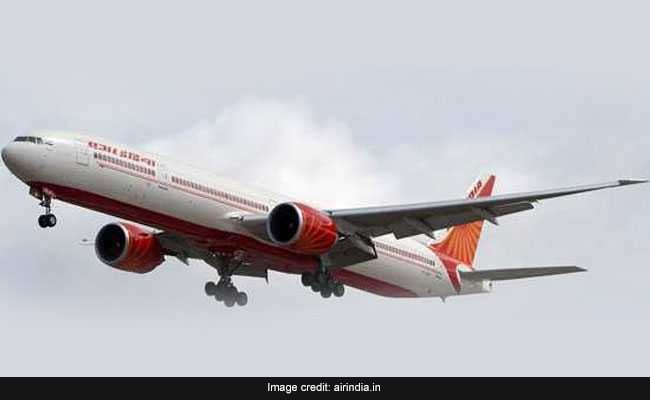- Air India 101 started encountering multiple systems failures
- The Delhi-New York flight was on a 15-hour non-stop journey
- Air India is investigating what caused multiple instrumentation failures
"Had this landing approach not worked, we would realistically have been left with enough fuel for only one more attempt to put the plane down" says Captain Rustom Palia, the senior Air India Commander at the controls of the Air India Boeing 777 that landed in Newark on September 11 despite multiple systems failing on board.
Minutes earlier, it had all started to go dreadfully wrong.
After a 15-hour non-stop flight from Delhi, Air India 101 had started encountering multiple systems failures in the cockpit.
Two of the jet's three radio altimeters, crucial in accurately gauging the aircraft's height from the ground, had started failing. The single remaining radio altimeter ''appeared compromised'' says Captain Palia. This resulted in a cascading crisis since the jet's Instrument Landing System (ILS), which gets crucial data from the radio altimeters, stopped functioning. The ILS helps pilots align the jet with the runway during landing in any weather condition, day and night.
"None of the instruments which were meant to help us land the plane were operational" says Captain Sushant Singh, the second senior Commander onboard the 777 along with First Officers Vikas and DS Bhatti, both co-pilots. The four-man crew shares the flying responsibilities through the ultra-long haul flight.
"Basically, we've got a single source radio altimeter, we have a Terrain Collision and Avoidance System failure" radioed in Captain Palia to Air Traffic Control in New York. "No Auto-land, no windshear systems, (no) Auto Speed Brake and the Auxillary Power Unit is unserviceable as well."

After a 15-hour flight, Air India 101 had started encountering multiple systems failures
With multiple failures in the cockpit made evident by blaring audio warnings and lights, the pilots on AI-101 needed to think quickly.
Unable to land in New York, they needed to focus on an alternate airport.
But this was easier said than done. Weather across the region was poor - "After a 15-hour flight, we came across weather where the cloud base was as low as 200 feet in places," says Captain Sushant Singh.
By now, Captain Palia had made up his mind. There was not enough fuel to risk flying to Albany, Boston or Bradley International Airport at Connecticut and he would take the chance "shooting an approach" into Newark despite the marginal weather conditions.
But here again, there were new problems that emerged.
"In our attempt at landing at Newark, the aircraft appeared to be going out of a stabilised approach because of further deterioration of instrumentation," explains Captain Palia. "The VNAV (Vertical Navigation) mode which we were relying on appeared to malfunction causing the aircraft to deviate from its approach path. We were too high as we approached Newark."
What's more, the pilots had still not spotted the runway at Newark because of the low hanging clouds. "Visibility was zero", says Captain Sushant Singh "but we decided to manually try and get the aircraft back on the correct descent path."
"I finally spotted the runway approach lights at an altitude of just about 400 feet just 1.5 miles away, a distance we would cover in seconds given the speed that we were flying at," he adds.
This was the make or break moment for Air India 101. Captain Palia had to quickly align the giant jet flying at close to 300 kilometres per hour at this stage. "I had to snap correct and descend the 777 without the help of any automated altitude read out" and with no means of knowing my precise altitude.
In the end, he managed to safely land the Boeing 777-300 at Newark. Passengers onboard would not have realised the ordeal the pilots in the cockpit had just gone through.
It could, in fact, have been a lot worse.
Within ten minutes of the cockpit crew of AI-101 finally switching off the engines of the Boeing, there was a torrential downpour over Newark airport.
Had they not been on the ground by then, Captain Palia says "we would have missed our approach and we would have ended up attempting to land in rapidly deteriorating weather with visibility becoming even worse."
Air India continues to investigate what caused the multiple instrumentation failures onboard the Boeing 777-300. The cockpit crew have been lauded for their role in handling the emergency scenario they encountered.
Track Latest News Live on NDTV.com and get news updates from India and around the world

